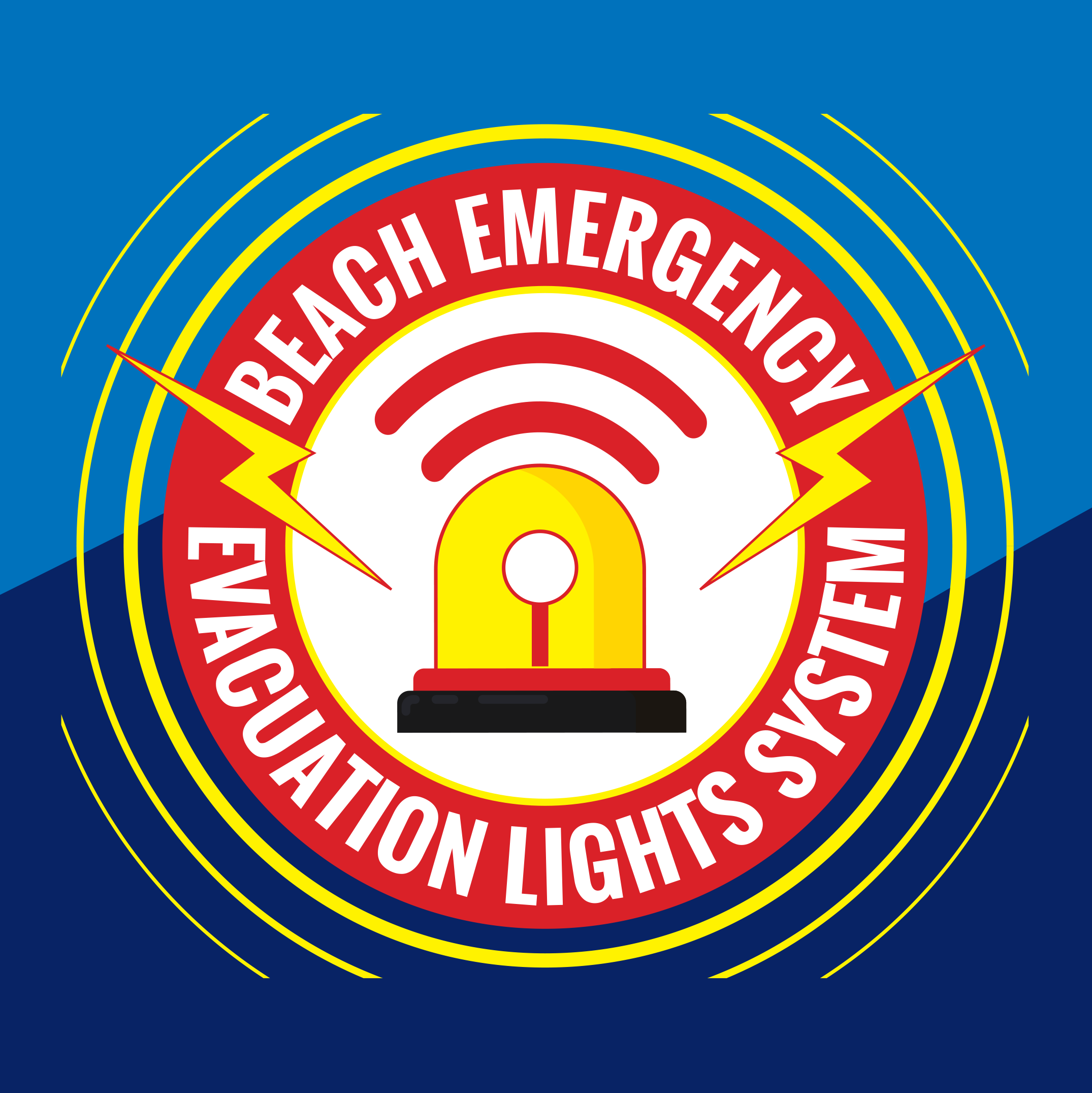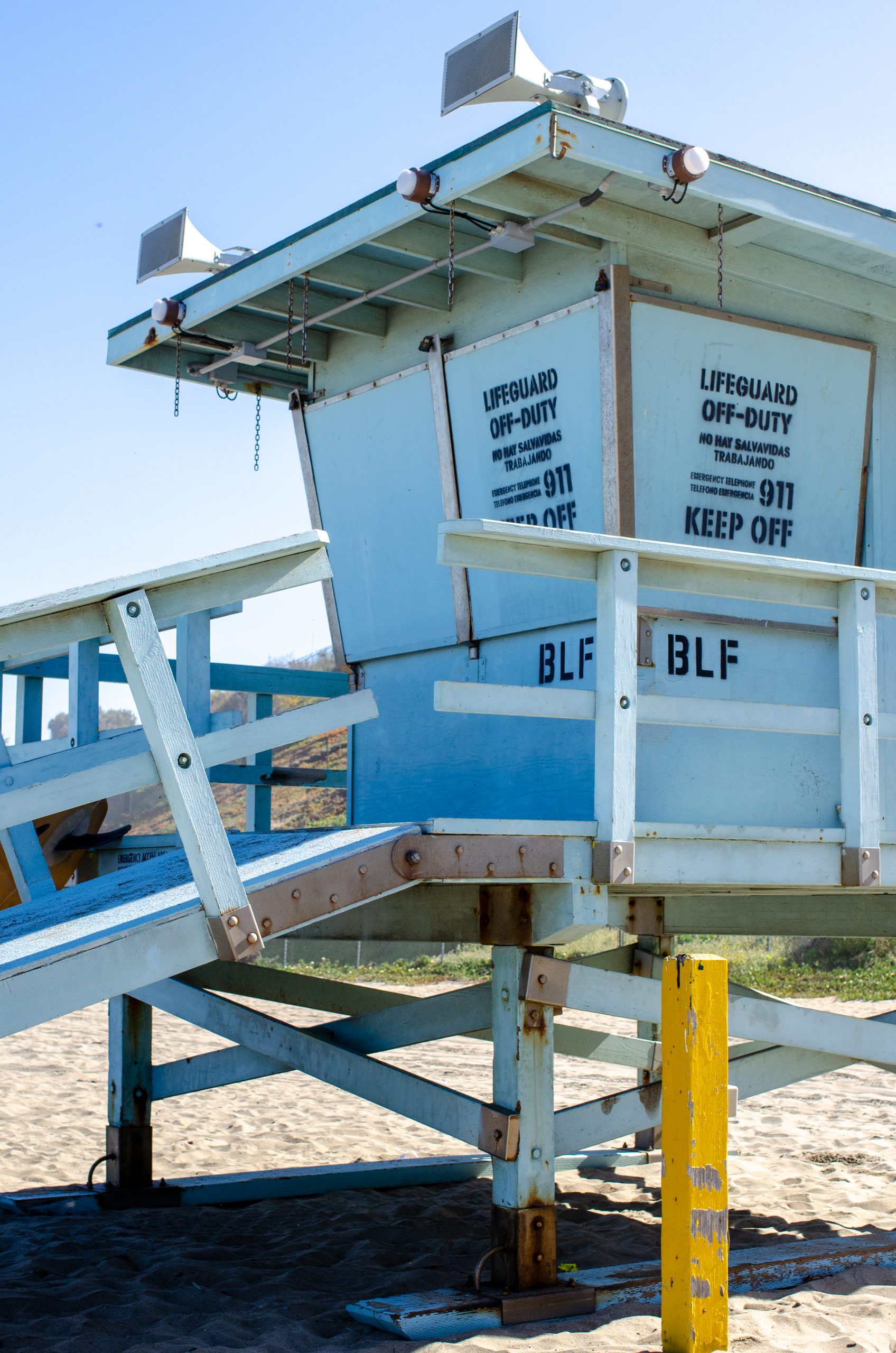ACCESSIBILITY
EVACUATION ALERT SYSTEM
BEACH EMERGENCY EVACUATION LIGHTS SYSTEM
The Beach Emergency Evacuation Lights System, also known as BEELS, is a new beach evacuation alert system designed for all beachgoers, including those who are deaf or hard of hearing. During a beach evacuation, BEELS will flash white LED lights mounted on permanent structures and some lifeguard towers, as well as broadcast a siren and an audible evacuation alert in both English and Spanish. The alert message will change depending on the evacuation type, and the lights will flash slowly for a water-only evacuation and quickly for a full beach evacuation.
The system is being piloted at Torrance Beach in June, and we hope to expand it to more beaches soon!

EVACUATION ALERT SYSTEM TESTING
The Department of Beaches and Harbors will be testing an updated version of BEELS from 11 a.m. to noon on Monday, June 5, and Tuesday, June 6. As part of the testing, these alert messages must be played to make sure they work:
- A tsunami warning has been issued. Please evacuate the beach immediately.
- A severe thunderstorm warning has been issued. Please evacuate the beach immediately.
- An earthquake is impacting the area. Please evacuate the beach immediately.
- An emergency event has occurred. Please evacuate the beach immediately.
- A shark has been spotted in the area. Please evacuate the water immediately.
- Unsafe conditions in the water. Please evacuate the water immediately.
The sirens and announcements are very loud, and they may be heard in some parts of Torrance, Redondo Beach and Palos Verdes Estates. To avoid panic, the Department is working with public safety agencies, local governments and community organizations in the South Bay to tell residents about the test. Signs warning about the testing will also be placed on the beach.
The testing will continue on Mondays from 11 a.m. to noon throughout June and possibly during the first few weeks of July. While the system will be at full volume, the emergency messages will not be broadcast.

The Beach Emergency Evacuation Lights System (BEELS) was first tested April 29 and will continue to be tested on Thursdays from 3-5 p.m. throughout May. These tests will make sure the entire system is working properly. Expect to see flashing lights and possibly hear low volume audio from the speakers.
The May 13 test will be a full volume test so we can measure how far away the siren and messages can be heard. As part of this test, we will need to test every alert message the system has. People at the beach will hear messages warning about tsunamis, severe thunderstorms, earthquakes, shark sightings, and generic beach and water evacuations.
In addition to alerting beachgoers to the specific type of evacuation via announcements and flashing lights, the Beach Emergency Evacuation Lights System (BEELS) also notifies public safety agencies and local officials when it is triggered. During testing, we need to make sure the following occurs when each alert is triggered:
- The correct evacuation announcement plays.
- The lights flash at the correct intervals.
- The correct message is distributed.
If we don’t test every message, this could happen during an emergency:
- A severe thunderstorm warning, which calls for the evacuation of the entire beach, is selected.
- The evacuation announcement tells beachgoers that a tsunami warning has been issued.
- The lights flash slowly, telling people who can’t hear the announcement that only the water needs to be evacuated.
- Public safety agencies and local officials receive an email or text saying that an earthquake has occurred.
Obviously, this is a situation we would like to avoid.
The short answer: It depends where you are.
The long answer: Most of the speakers face west, directly at the ocean; however, a few face northwest or southwest so that people between the speakers can hear the alerts. Other factors like the bluffs and offshore winds can affect where the sound carries.
Back in 2019, we conducted tests to determine what kind of speakers would be best for BEELS. During that test, we measured the siren and announcements all the way at the water’s edge at about 95 decibels. For comparison, that’s about as loud as a motorcycle. The closer you are, the louder it gets.
If you’re on Torrance Beach, the speakers will probably be very loud, and we are recommending that people wear earplugs. If you’re in the parking lot behind Torrance Beach, it will likely be quieter.
Great question! We are working with city officials and public safety agencies in Torrance, Redondo Beach and Palos Verdes Estates to notify residents. We’re also doing the following:
- Placing signs on lifeguard towers and facilities, along the bike path, at all beach entrances, and next to parking kiosks,
- Coordinating with AlertSouthBay to notify affected residents via text and email,
- Working with local businesses and business associations,
- Speaking with local city councils to share information,
- And more.
On the day of testing, we will also play the “This is only a test” announcement for 20 minutes, starting at 3 p.m., as well as between tests of the other announcements.
